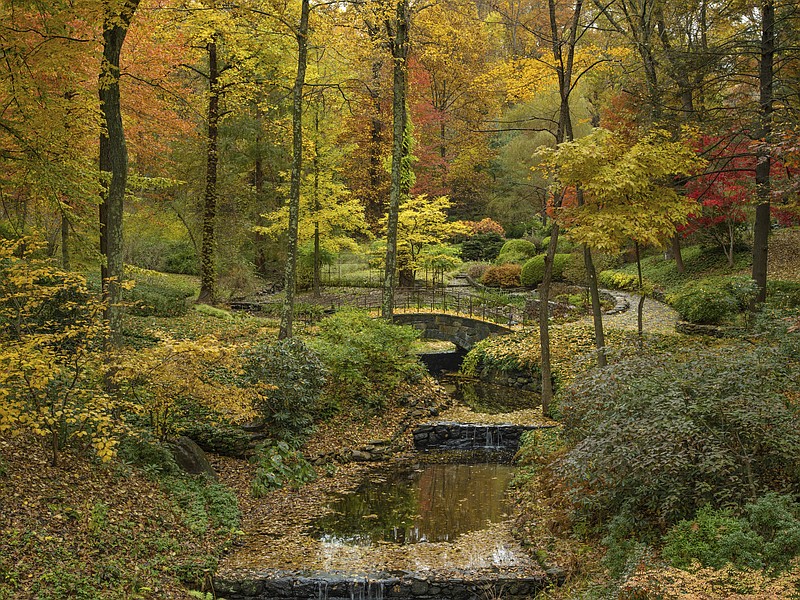NEW YORK (AP) - The coronavirus has led more people to spend time outdoors, and many find themselves walking the same paths and gazing at the same trees or shrubs day after day.
Author and self-taught landscape photographer Larry Lederman suggests looking at your surroundings anew by turning a camera on them. Fall and winter, he said, are the perfect time to take up landscape photography.
There's the gorgeous fall foliage but also the beauty of the bare trees and their shapes. Lederman said to start photographing now and then watch the year-round transformation of the landscape.
His new book, "Garden Portraits: Experiences of Natural Beauty" (The Monacelli Press), examines 16 East Coast gardens throughout the seasons, offering inspiration for novice landscape photographers.
"There's something to be said for shifting one's focus toward landscapes, particularly trees, many of which are at their most beautiful in the fall," said Gregory Long, who was president of the New York Botanical Garden for more than 25 years and wrote the book's foreword.
That shift in autumn is "liberating," Long said, "particularly when the focus is not so much on hedging and weeding, but more about beautiful trees and winding paths."
Lederman started out by taking long walks through the Botanical Garden every Sunday morning, making a sort of photographic inventory of the trees.
His advice to those trying to shoot beautiful landscape photos:
1. Begin in fall or winter, and watch as the year unfolds.
To get a good sense of a garden or landscape, Lederman recommends starting to photograph it in the winter, when "everything is bare and you can see the bones of the landscape. After that, everything is a surprise," he said.
"Some gardens are truly surprises. It's like watching a wave come in. It builds up force, builds up more force, and suddenly you are inundated with this burst of light and color," he said.
"Some gardens have rooms, some have paths that let you wander, guiding you in so you can contemplate, escape and wonder. My job is to see that in a way that's new and interesting, and communicates the whole aura of the space," Lederman said.
2. Practice looking, then looking again. And again.
Take your time, Lederman emphasized. He spends two to three hours at a time in each garden, even in rain or snow, sometimes going straight from garden to garden, gear in tow, for a full day, observing lighting, shadow and composition.
"If you take photographs of your garden and you finished and say you've done it, you haven't even started," he said. "Try it again the next day, stand in a different place, and really look around and take your time. Think about where you want the sun, and what you want to emphasize, what you want to include or exclude. Then change your place again."
3. Think about composition; what do you want to include or exclude in the frame?
"The frame is everything, and your job is to fill the frame," Lederman said. It's the difference, he said, between a quick snapshot and an artistic photograph.
4. Consider order and balance, and pay attention to where your eye wanders.
"You can take pictures of a garden and it looks like a mess, just a lot of flowers or something. But that's not the art of it. The art of it is to give you a way in, and a sense of enchantment," Lederman said.
His photos tend to include a garden path, which guides the eye in, or sometimes a well-placed stone wall.
5. Keep an eye out for the idiosyncracies and emotion of a place.
"I aim for images that capture both the quirkiness of the tree along with its inherent elegance and beauty. I'm looking for a sense of place, then I try to capture the visual qualities of it that give you an emotional feel," Lederman said.
Reflections in a creek or pond, moss covering stones, a dazzling garden gate, an arbor or a branch leaning way over in a certain way - there's a lot to see in a great landscape, he said, even when the leaves have fallen and the colors faded.

